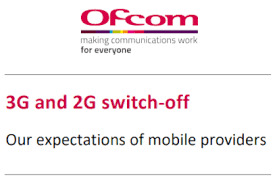#NB_IoT
Explore tagged Tumblr posts
Text

#STMicroelectronics#NB_IoT#geolocation#connectivity#IoT_applications#powerelectronics#powermanagement#powersemiconductor
0 notes
Text

(2024-04-02 image © the fast mode) We tend to think of mobile technologies are based on our general use of the network on our mobile phone. However there are a large and growing number of applications - IoT applications - that have different needs. IoT [Internet of Things] is all about small devices being connected to the internet. For example our smart meters are connected to a network and the demands placed on the network are not great, a few numbers every half hour or so. Rather than use the 'general' network a new protocol NB-IoT would be more suitable.
Taking the smart meter as an example again, the current meters are not really smart. They do not allow the customer really manage their energy use. A next generation smart meter will use the mobile network to send energy use data, and supply pricing to and from the new smart meters. This network traffic will use the NB-IoT network rather than the 'general' network.
Vodafone see the use of NB-IoT as growing considerably not just for smart meters but for all sorts of IoT applications. This could be a growth area for the mobile companies, and financially good for them.
0 notes
Link
0 notes
Link
Narrowband (NB-IoT) chipset Market is projected to grow up to USD 4.3 billion by 2027 growing at a CAGR of 32.5% during the forecasting period 2021-2027.
A narrowband Internet of Things (NB-IoT) chipset is a tiny electronic device that may be placed in objects, machines, and electrical devices to provide connectivity. The narrowband Internet of Things (NB-IoT) chipset market is growing at a rapid pace, owing to the tremendous benefits associated with these technologies, such as low energy consumption by user devices, high system capacity, and improved spectrum utilization for wide-area coverage and deep coverage of an area. NB-IoT chipset prices are now comparable to those of Mobile Network (GSM) and General Packet Radio Service (GPRS) (GPRS). These, on the other hand, are anticipated to decline substantially as prices increase.
The overwhelming amount of NB-IoT applications and the increasing participation of industry players in the development of NB-IoT, as well as the high prevalence of IoT and the expanding use of connected devices, are some of the factors driving the growth of the NB-IoT chipset market in recent years. The research on the Global Narrowband IoT Chipset Market offers a comprehensive analysis of the marketplace. Detailed description of major segments, trends, drivers, and constraints, as well as the competition landscape and factors that are playing a significant role in the market, is provided by this research.The rise in the use of Internet of Things devices, as well as the increase in internet availability, are the primary drivers driving the development of the narrowband Internet of Things (NB-IoT) chipset market. Furthermore, the fast expansion of cellular Internet of Things networks to reach the whole community drives the market's quick expansion. Furthermore, as compared to unlicensed band based technologies like LoRaWAN and Sigfox, it has a greater penetration into structures and higher data rates, making it more opportune for industry development. Because of these reasons, the narrowband Internet of Things (NB-IoT) chipset market is expected to expand at a rapid pace in the foreseeable future.
View Complete Report: https://whipsmartmi.com/report/narrowband-nbiot-chipset--market
Request a Sample of this Report: @ https://whipsmartmi.com/sample/es0809/Narrowband-(NB_IoT)-chipset--Market
Explore other reports from” Semiconductor and Electronics” sector @
https://whipsmartmi.com/Category/Semiconductor-and-Electronics
Contact Us:
Neeraj
WhipSmart Market Intelligence
7264 Magistrate Terrace,
Mississauga,
Ontario L5W 1H8
Canada
0 notes
Photo

Wi-Fi Energy Meter in USA
Book Wi-Fi Energy Meter in USA at Sfere Electric. We provide Wi-Fi Energy Meter with affordable rates. For more details click this link - https://sfere-elec.net/products/Wireless-data-transmission-22.html #WiFi_Energy_Meter #Energy_Meter #Sfere_Electric #nb_iot #iot_meter #usa #california #new_york #ohio #san_fransico
0 notes
Text
$TTCNF Telit Communications S.p.A. 2G and LTE CatM1/NB_IoT wireless module ME910C1P2 (RI7ME910C1P2)
http://dlvr.it/R9yt9Q
0 notes
Text
#Samsung Electronics#MT8870A#NB_IoT#Io technology#powerelectronics#powermanagement#powersemiconductor#IoTTesting
0 notes
Text
https://electronicsbuzz.in/gd-mobile-security-launches-first-nb-iot-isim-os/

#Giesecke+Devrient#NB_IoT#iSIM#cutting_edge#IoT_connectivity.#powerelectronics#powersemiconductor#powermanagement
0 notes
Text

(2025-03-23 image ©ofcom) Currently EE, Vodafone and Three have switched off their 3G networks, (with the odd pocket of 3G left) and currently O2 is doing the same. One surprise is that some of the press are highlighting the O2 switch off as a problem but as the switch off from the other networks did not cause major issues, I am not sure why they are focussing on O2 causing problems. Unless there is something special about the O2 3G network that I am not aware of.
But also EE and O2 have begun investigations about switching off 2G. When they do, there is no fall back for 2G Phones nor 3G phones that are now using 2G. Anyone with such a phone will have to upgrade to a basic 4G phone, which are not expensive, Tesco sell the Nokia 110 4G phone for £30. The 2G switch off in 5 years will be a lesser issue than the 3G switch. It will affect a few people but the solution is not significant.
BUT, the 2G switch off will affect many many devices and services. Currently there are many devices that use 2G to send data to a cloud data store be that trackers, health monitors, data loggers, traffic management, etc. An obvious solution would be to switch to 4G. They use 2G because they do not need the complexity of 4G. A switch to 4G would involve the wholesale swapping of devices which would be expensive. It is this area that EE / O2 are currently looking into. The providers of some of these 2G devices have known about the switch off for 5+ years and have not done anything about a swap, now the deadline is looming and they do need to move at a significant cost. A less obvious solution, which is cheaper, is to move to NB_IoT or LTE-M protocols designed for IoT devices. I suspect that this would need a bigger re-write of the software and again a large expense.
0 notes
Text

(2025-02-09 image ©smart meters) How does your smart meter work? Or does it? It works by communicating readings from the meters in your house to DCC who routes them to your supplier. The communication from your meter to DCC is either using the O2 2G network, if you are in the south of the UK or Arqiva's radio network at around 400MHz in the north of the UK. In a recent BBC Panorama program there has been much criticism of the communication system, especially in the north of the UK with figues of up to 30% of meters not working, including mine! Another issue that DCC and the energy companies will need to address soon is the switch off of 2G.
What is the solution? DCC and Vodafone have carried out some trials of using 4G to send that data from the meters to DCC. Further trials will follow. Once complete, it is expected that DCC and Vodafone will convert every meter to their new system - at a significant cost.
There are a number of questions about using 4G. By the time the network has been changed to 4G it will be 30 years old and we will be thinking about 6G. A different and may be better option would be to use NB-IoT protocols that run over 4G, but would also run over 5G and 6G so more future proof. Vodafone have not released any details of which technology they are using so they may be using NB_IoT.
Either way there is a big and expensive change coming to our smart meter network. For one I am happy as this may solve the communication issue with my meter.
0 notes
Text
$TTCNF Telit Communications S.p.A. LTE CatM1/NB_IoT wireless module ME910C1P1 (RI7ME910C1P1)
http://dlvr.it/R9v4xd
0 notes
Text
$TTCNF Telit Communications S.p.A. 2G and LTE CatM1/NB_IoT wireless module ME910C1WW (RI7ME910C1WW)
http://dlvr.it/R9tQ5G
0 notes
Text
Quectel Wireless Solutions Company Limited NB_IoT Module 201808BC26 (XMR201808BC26)
http://dlvr.it/Qsmtfq
0 notes